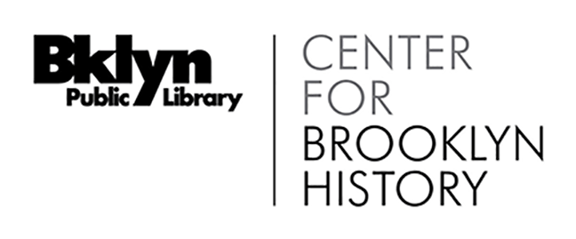John Thatcher Collection
Call Number
Date
Creator
Extent
Language of Materials
Abstract
Materials concerning John Thatcher, owner of building and plastering firm Thatcher & Son and Superintendent of the Bureau of Buildings for the city of Brooklyn.
Biographical Note
John Thatcher (1853 – 1912) was one of the foremost builders for the city of Brooklyn during the late 19th and early 20th centuries. From 1899 until his death, Thatcher held the position of Superintendent of the Bureau of Buildings for the city of Brooklyn. Before this post he worked as the Superintendent of the Bureau of Sewers under the Swanstrom Administration.
Born near Hollowell, Wales in 1853, Thatcher moved to America in either 1863 (according to several sources) or 1870 (according to the Brooklyn Daily Eagle) and settled first in Brooklyn. He worked for his uncle James Thatcher as a plasterer and then moved to Chicago in 1871, looking for work as a builder after that city was devastated by fire. When Thatcher returned to Brooklyn he began his own plastering and building firm, Thatcher & Son. Thatcher lived in Brooklyn until his death on June 18, 1912 at the age of 59. He died following a fall, due to faulty scaffolding, from the top story of a partially constructed tenement building at New Lots Road and Snediker Avenue, in the East New York section of Brooklyn.
Buildings erected by Thatcher include: the Brooklyn Academy of Music, the Dime Savings Bank, a wing of Brooklyn Hospital, the Hebrew Orphan Asylum, the warehouse of the Brooklyn Storage and Warehouse Company, Erasmus Hall High School, the Polhemus Clinic of the Long Island College Hospital, areas of the Abraham and Strauss department store complex, the Carroll Gardens library branch, as well as hundreds of apartments, private homes and schools. Important to acknowledge is the ingenious plan Thatcher & Son devised (after John Thatcher's death) to move the Lefferts homestead. The historic 18th century Dutch Colonial farmhouse was moved to Prospect Park in 1918 from its original location at 563 Flatbush Avenue.
Thatcher developed a reputation as a strong advocate of building reform. He recommended the wearing of uniforms by Buildings Bureau employees in an effort to exhibit authority and professionalism in the construction field. In order to ensure safe construction Thatcher made a convincing argument to have a bill passed which required builders to be licensed. In reference to this bill, Thatcher wrote, "There is a positive danger existing today in that a large number of buildings are put up by men who know absolutely nothing about construction. Their one aim is to make money and the cheapest labor in the market."
His funeral was attended by many government and borough officials, including borough president Alfred Steers, Assistant of the Borough of Buildings William A. Coakley, and Congressman William C. Redfield. Also important to recognize was the praise Thatcher received from several politicians of his day. Mayor Gaynor declared, "I do not know when I was so much affected by the news of the death of any one as by the news of the death of John Thatcher … He was one of the best public officials that I have ever known in every sense." Alfred Steers reiterated Gaynor's thoughts, "He died a martyr to the service. He was one of the best officials that Brooklyn, and in fact the entire city, has ever had." The Brooklyn Daily Eagle described Thatcher as "one of the most honest and devoted public officials Brooklyn has ever had."
Arrangement
Arranged in 3 series by type:
Series I: Correspondence and Ephemera is arranged alphabetically by sender
Series II: Newspaper Clippings is arranged alphabetically by newspaper title
Series III: Photograph Album is arranged by building
Scope and Contents
Series I consists of 14 letters sent to John Thatcher's wife and son upon his death in 1912. Many of these are from politicians and colleagues sending their condolences, although some deal with more practical concerns such as funeral arrangements and obituary notices. Series II consists of 31 binder pages of newspaper clippings reporting Thatcher's death and the aftermath, mostly collected by the Henry Romeike newspaper cutting service of New York City. Clippings are from such papers as the Brooklyn Daily Eagle, the Standard Union, and the New York Times. Series III is an album of 8x10" black and white photographs of buildings constructed by John Thatcher & Son with hand-lettered captions.
Subjects
Access
Open to researchers without restriction.
Use
While many items at the Center for Brooklyn History are unrestricted, we do not own reproduction rights to all materials. Be aware of the several kinds of rights that might apply: copyright, licensing and trademarks. The researcher assumes all responsibility for copyright questions.
Preferred Citation
Identification of item, date (if known); John Thatcher collection, BCMS.0019, Box and Folder number; Brooklyn Public Library, Center for Brooklyn History.
Provenance
This collection was aquired by the Brooklyn Public Library in 1998.
Physical Characteristics and Technical Requirements
If digital surrogates exist, they should be used in place of the originals whenever possible.
Existence and Location of Copies
Portions of this collection are digitized and available on our digital collections.
